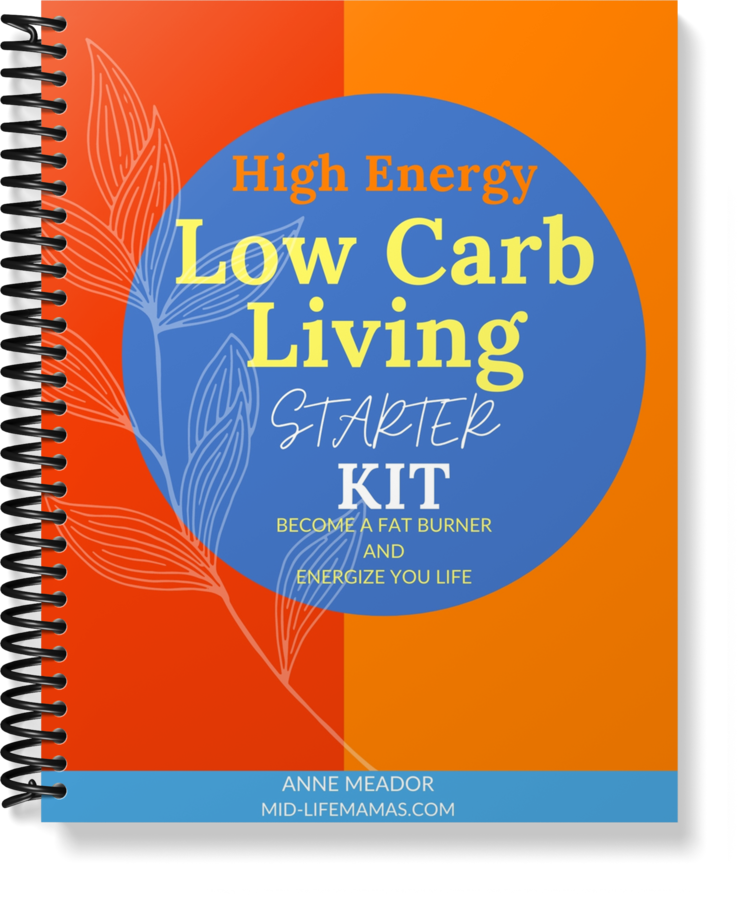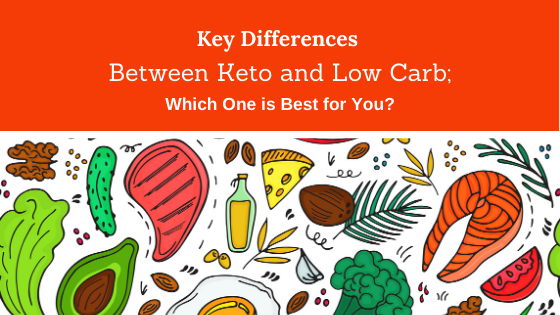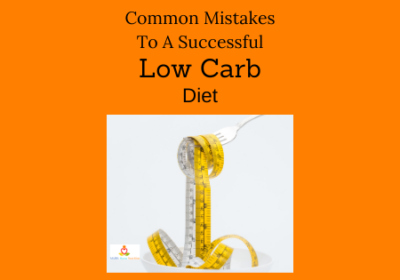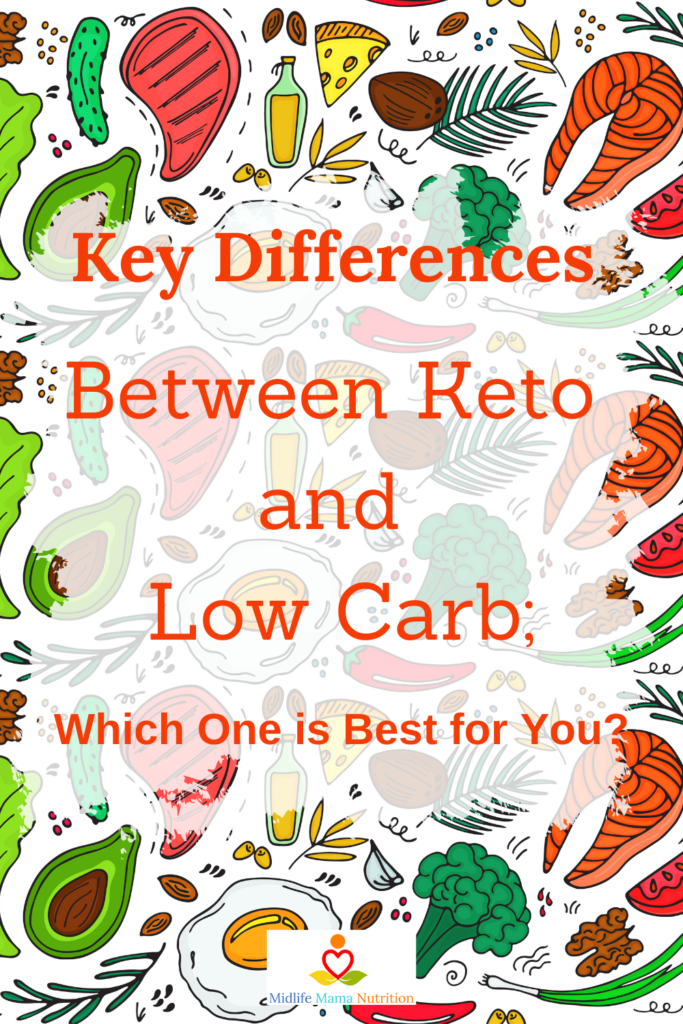
Have you been wondering about the difference between a ketogenic diet and a low-carb diet? What do they do for your health? Read on to learn about the key differences between keto and Low Carb.
Both diets are very similar, but there are key differences that you should know before you choose to start either one.
This post explains the similarities and differences between low-carb and ketogenic diets, what you can expect when starting them, and help you to determine which one is better for you.
Similarities Between Ketogenic and Low Carb Diets
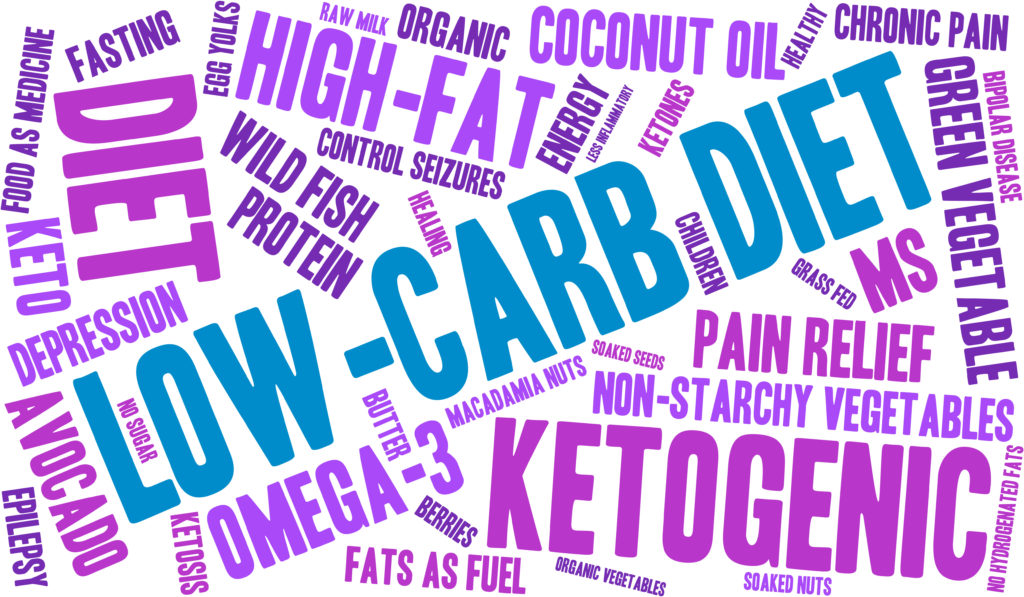
Both diets are based on significantly reducing or eliminating sugar and other carbohydrates from your diet. Sugars and other carbohydrates cause a spike in your blood sugar quickly (some faster than others). This causes your pancreas to produce high insulin levels, which is known as the “fat-storing” hormone. It’s called the fat-storing hormone because it causes you to store fat instead of burning it.
When your body doesn’t have enough sugar (a.k.a. glucose) to use as fuel, your body makes its own through a process called gluconeogenesis. This mainly occurs in the cells of your liver and kidneys. It’s done by breaking down fats and proteins.
When you significantly reduce your sugar intake, a metabolic process occurs in your body called ketogenesis. A ketogenic diet is based on getting your body to shift from using sugar as the primary fuel source to using ketones. When ketogenesis occurs in your body, you are considered to be in ketosis.
Both the keto and low-carb diets can cause your body to be in “Ketosis.” But to be on a ketogenic diet, your body needs to be and stay in ketosis. This is not true on a low carbohydrate diet.
Want to learn more? Get our FREE High Energy-Low Carb Lifestyle Starter Kit.
Differences Between Ketogenic and Low Carb Diets
While based on the same general concepts, there are major differences between the two.
Amount of Carbohydrates (based on 2000 calories a day)
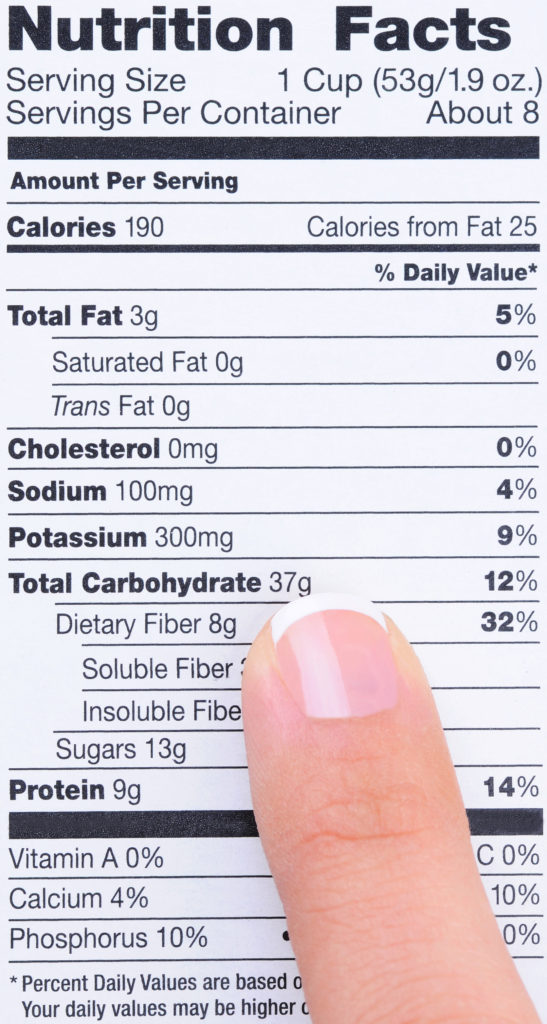
The main difference between these two diets is the number of carbohydrates you eat. A ketogenic diet includes significantly fewer carbohydrates than a typical low-carb diet. A ketogenic diet consists of only 20-30 grams of carbohydrates per day, whereas a low carb usually consists of 100 -150 grams per day.
Compare these numbers to The Standard American Diet (SAD) which recommends 225-325 grams per day. Both the keto and low carb diets incorporate significantly fewer grams of carbs. the keto diet and the low carb diet are significantly lower.
Testing
When you’re on a strict ketogenic diet you are supposed to test your urine or blood for ketones. These tests show if ketones are present in your system, when they are it means that you’re in “ketosis,” or are “ketone-adapted.” Your body is now burning fat and making ketones for fuel.

The goal of a ketogenic diet is to continuously be in ketosis.
However, these tests are not always accurate. It’s possible to have a high level of ketones and be “keto (fat)-adapted” without having raised levels in your urine or blood.
Keto(fat)-adaption often takes about two weeks. During this time you may experience brain fog, headaches, nausea, cramps, and other symptoms as your body becomes more efficient at using fat instead of glucose for energy.
Keto (fat)-adaption occurs with both the keto diet and the low carbohydrate diets. It’s just that most people don’t test for ketones when on a low-carb diet.
Ratio of Carbs/Fats/Proteins
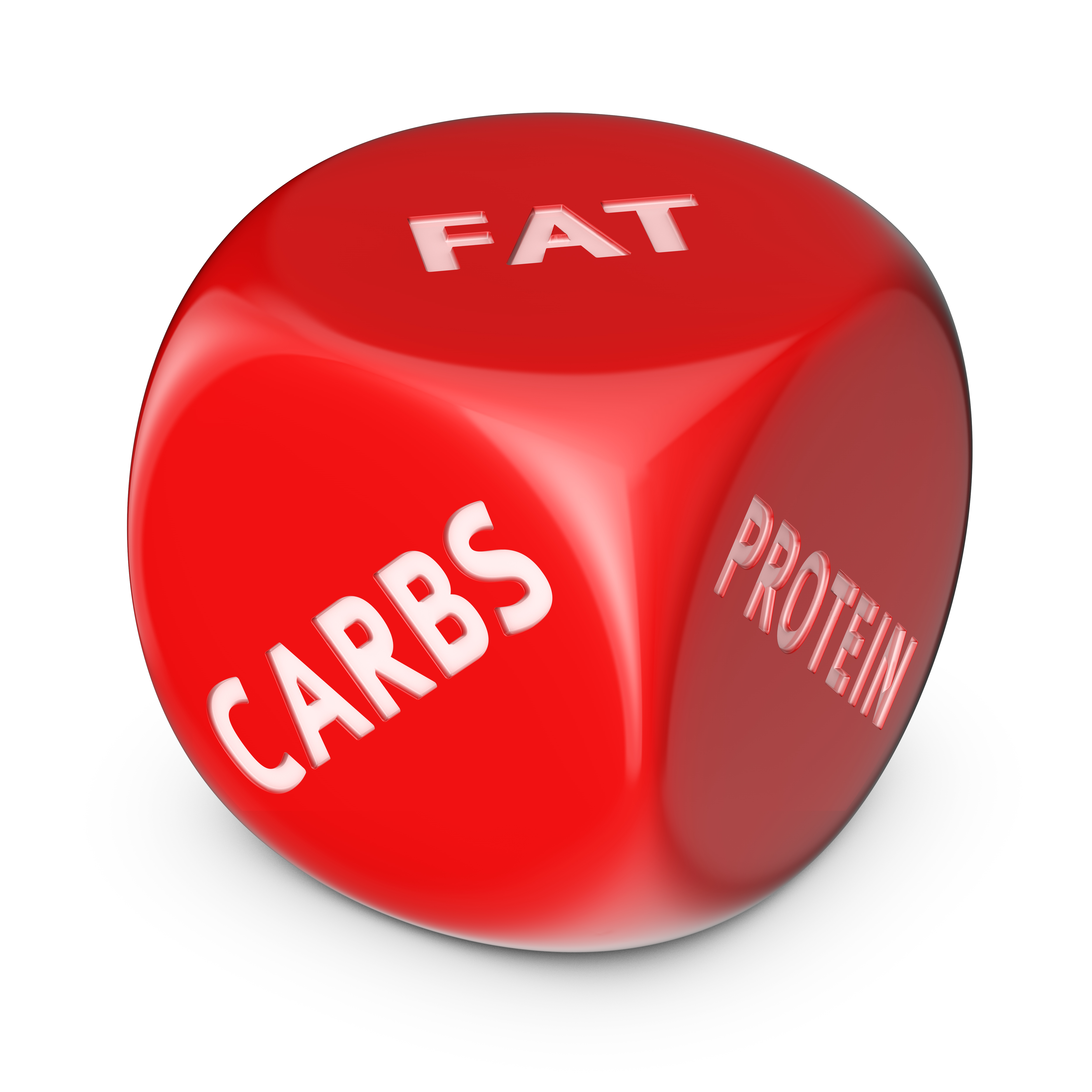
The ratio of carbohydrates, fats, and proteins on a ketogenic diet is typically between 70-80% fat, 10-20% protein, and about 5-10% of carbohydrates.
Whereas a “typical” low carb diet has a higher percentage of proteins and carbohydrates, but fewer fats than a ketogenic diet. These ranges vary greatly depending on who you’re talking to. In our High Energy-Low Carbohydrate Lifestyle Program we recommend eating 25% fat, 25% protein, and 25% carbohydrates. The success of the diet is based on what works best for you, this varies from person to person.
The ratio for low-carb diets is more flexible than a ketogenic diet. If you go this route, I always advise you to start by removing foods with high quantities of carbohydrates such as bread, pasta, and sweets and see how your body adapts. If you have more energy, lose body fat or weight this may be all you have to do.
Weight Loss
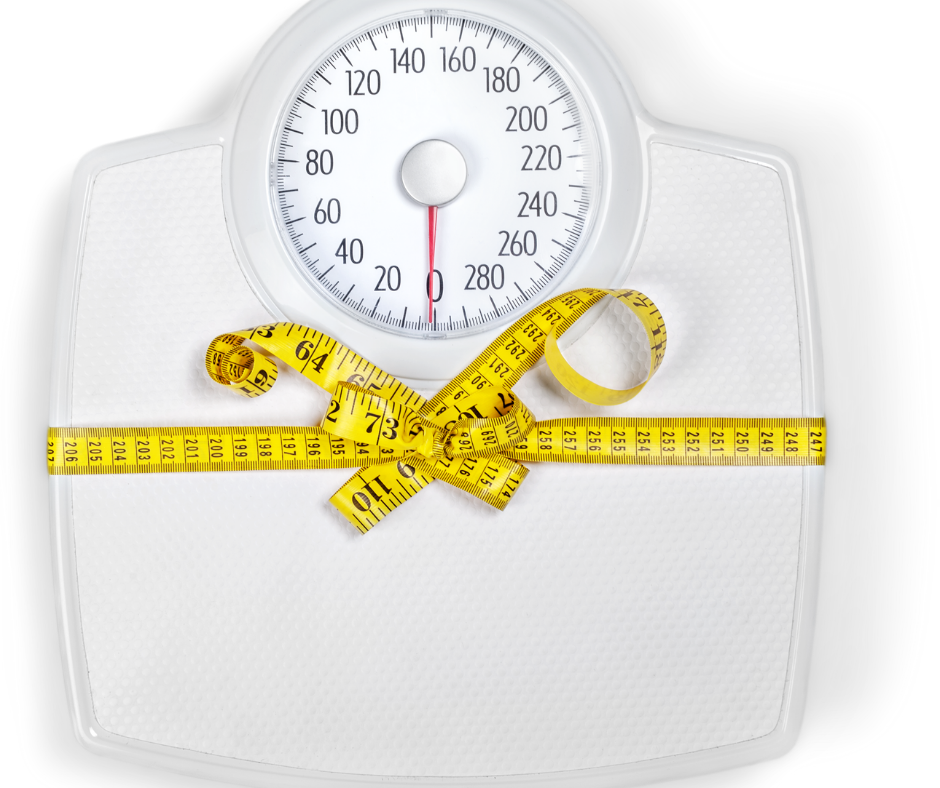
Ketogenic diets usually result in greater weight loss than low carbohydrate diets in the beginning. Over time low carbohydrate diets can be just as effective. Once you switch to being a fat burner from a sugar burner, you will lose weight. It may take longer, but you’ll get there. It’s harder to sustain a Keto diet over time because it’s more restrictive.
You may also see more weight loss over time with a low carbohydrate diet. This is because you can make it a lifestyle and not a diet, so it’s easier to follow over much longer periods of time.
Want to learn more? Get our FREE High Energy-Low Carb Lifestyle Starter Kit.
Duration

Since the Ketogenic diet is stricter, it requires testing to prove your body is in ketosis, and counting grams of carbohydrates is advisable. The ketogenic diet is harder to sustain over long periods of time.
Once you change your eating habits to eliminate general high-carb foods, a low carbohydrate diet is easier to sustain for most people, so they will stay on the diet for longer periods of time.
What to expect on a keto or low carb diet?
When starting either of these diets, a common side effect is what’s known as the “keto flu” or “low carb flu.” This is what happens when your body is changing from being a sugar burner to a fat burner. The symptoms generally include fatigue, headache, nausea, and difficulty concentrating.
It’s important to drink plenty of fluids and eat lots of low carb vegetables during this time because being dehydrated or undernourished makes the symptoms worse. Generally, most people can adjust within about two weeks but it could take longer for some people.
Also, some people on a low carb or ketogenic diet will experience “dieter’s highs.” This is a feeling that a lot of people go through when their bodies readjust to eating low carbs and dietary fats. The high comes and goes quickly, but can last up to two hours before returning to normal.
Which One Is Best For You?

Many people have great success with both types of these diets.
If you’re looking to lose weight in a short amount of time, a ketogenic diet may be better for you. But if you’re looking for a long term lifestyle with more flexibility, a low carb diet may be the better choice.
No matter which one you choose you’ll be more successful and healthy if :
- You eat enough fat so you don’t feel hungry. If you have to go through the day feeling hungry, you’ll feel like you’re missing out therefore tempted to go off the diet.
- Minimize the number of processed foods you eat.
- Eat as many earth-grown low carb foods as practical
- Stay hydrated and use electrolyte supplements
What’s your experience Keto and or low carbs diets? Comment below.
Want to learn more? Get our FREE High Energy-Low Carb Lifestyle Starter Kit.
MEDICAL DISCLAIMER: Before starting any diet, you should speak to your doctor or another professional healthcare provider. This post is for informational purposes only and is not to be considered medical advice. Nothing contained on this website is intended to establish a physician-patient relationship, replace the services of a trained physician or health care professional, or otherwise to be a substitute for professional medical advice, diagnosis, or treatment.

